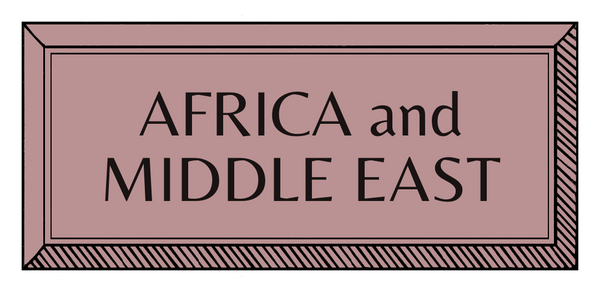CRAFT STORIES | ASIA | TURKEY | WEAVING
The History of Weaving in Anatolia

From the earliest Neolithic discoveries at Çatalhöyük to the exquisite Ottoman carpets that adorned Renaissance canvases, Anatolia’s weaving heritage is a rich tapestry of tradition and artistry. Now, as contemporary designers breathe new life into the ancient techniques, the vibrant colors and patterns of these storied textiles continue to captivate, reminding us of a cultural legacy that spans both centuries and continents.
In 1958, a team of archaeologists working in the vast plateau of central Anatolia began to excavate a Neolithic mound known as Çatalhöyük. The settlement they uncovered proved to be one of the earliest and most significant in the Near East, not least because the oldest known woven cloth was amongst the discoveries. Inhabited 9,000 years ago by a population of about 8,000, the site showed evidence of the domestication of animals and plants, as well as the production of painted pottery, figurines, and fabric for clothing. Textile fragments of interlaced fibre derived from the bark of oak trees have been dated to 7000 BCE.
Further west near Gördes, fragments of woollen cloth dating to around 4,000 BCE found in the legendary tomb of King Midas attest to the production and robust trade in woven fabric across the breadth of the Anatolian peninsula – the part of modern-day Turkey that lies in Asia. Once the Turkish tribes began to move west from Central Asia, carpet weaving was established in Anatolia. In the late 13th-century, the Venetian traveller, Marco Polo, was one of the first westerners to note their exceptional beauty. Artists such as Carlo Crevelli, Giovanni Bellini, Lorenzo Lotto and Hans Holbein, active before and during the Renaissance, painted so many accurate renditions of carpets from Ottoman-era Anatolia that some weaving designs are still referred to by their names.

The Castle and Mosque of Old Beyazit in Doğubayazıt, Eastern Anatolia, originally built by the Urartians, bears traces of many civilizations.© Suleyman Can Sezgi
Visitors to Istanbul in June had the opportunity to see some of these woven masterpieces in several exhibitions accompanying a conference organised jointly by the International Conference on Oriental Carpets (ICOC) and the Istanbul Carpet Exporters’ Association (IHIB). The exhibits ranged from the intense colors of the kilims (tribal flatweaves) collected by the American photographer, Josephine Powell (1919–2007) – which were displayed in a beautiful old mansion on the shores of the Bosphorus – to the powerful graphics of another group of historic kilims shown in the exhibition spaces of the domed Tophane-i Amire Cultural Centre. This former cannon and munitions factory was built in the 15th century soon after the Ottomans made Istanbul their capital.
But for many it was the display, aptly named ‘Hidden Gems,’ at the Museum of Turkish and Islamic Arts (TIEM) on the Hippodrome that was most impressive. Here, rarely seen old carpets from Uşak, Konya, Karaman and other renowned Anatolian weaving centres were presented within the stone walls of the ground floor of the museum that was once the residence of Süleyman the Magnificent’s first Grand Vizier, Ibrahim Pasha. The building’s pedigree befits the collection, astounding in its breadth and artistry. Fragments brought from the tomb of the Seljuk sultan, Alaeddin Keykubat, in Konya showed the striking Kufic borders of their time, while Ottoman-era medallions, stars, and stylised tulips glowed in the madder red, indigo blues, and vibrant yellows of the master weavers and dyers of the historic Anatolian centres such as Uşak where they were made.
The weavers of Uşak continued to make carpets, surviving the early- 20th century upheavals associated with the dissolution of the Ottoman empire and the founding of the Republic of Turkey in 1923. But the later-20th century saw a decline in standards and in the numbers of young women prepared to train and work in the same way as their grandmothers and great-grandmothers.
Recent years have seen moves to counteract this trend with several initiatives aimed at revival, sustainability and the incorporation of contemporary design in the industry. One such company, Kirkit rugs, opened a trial workshop in Uşak in 2021. Employing more than 20 weavers, Kirkit production showcases traditional and contemporary designs in weavings that are now exported globally. Paid well above their previous rates, these skilled women have become adept at producing the patterns of their forebears as well as interpreting those produced for them by the talented young Turkish designers of today. While not yet assured, the future of Uşak and other historic weaving centres remains bright, even as the industry and its markets adapt to change.
Susan Scollay PhD FRAS is an art historian and writer specialising in the art and architecture of the Islamic world and in historic textiles. She is a frequent visitor to Central Asia and Turkey.
Words by Susan Scollay
Images from the HALI and the Leigh Marsh Collection












































